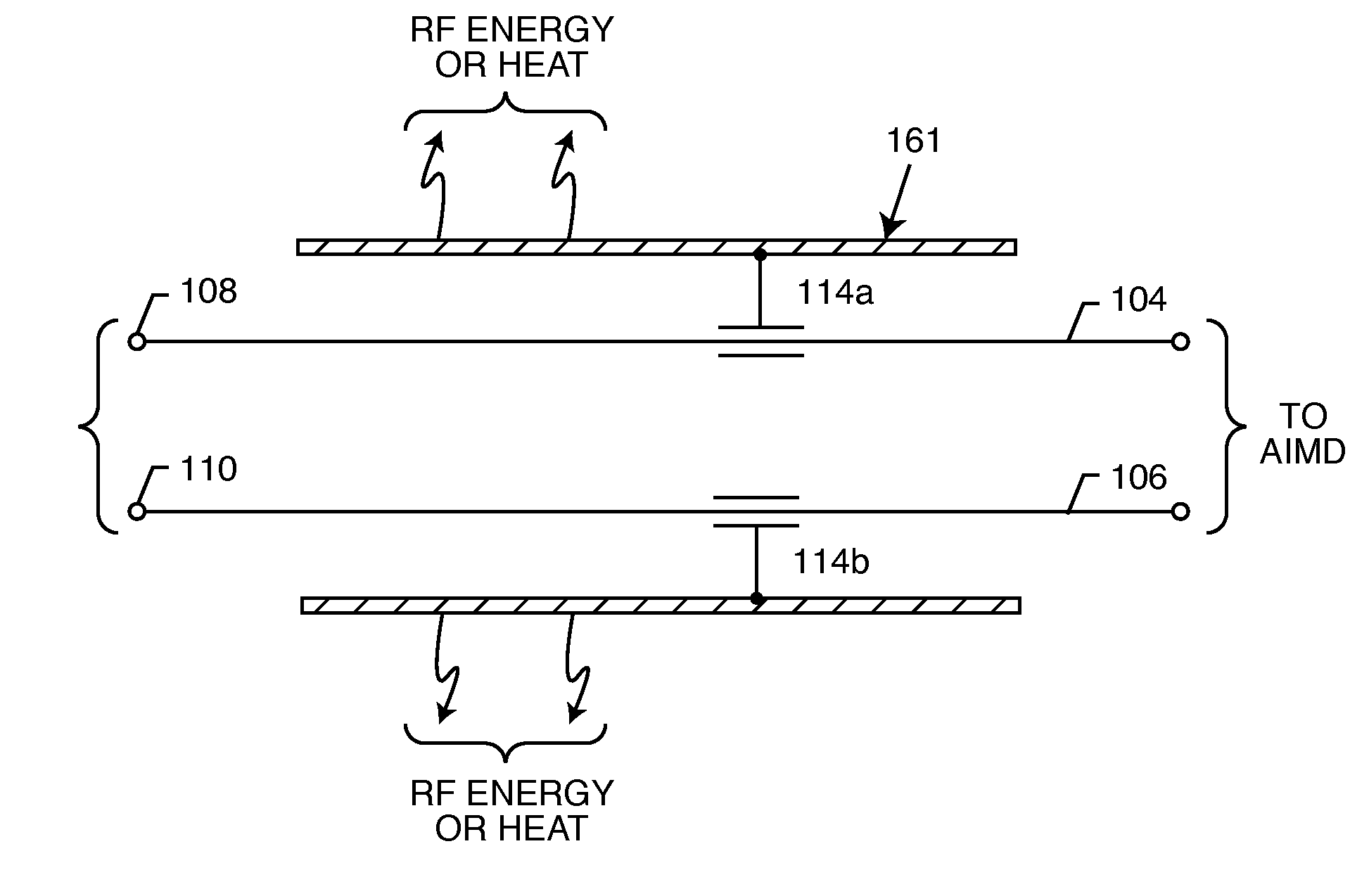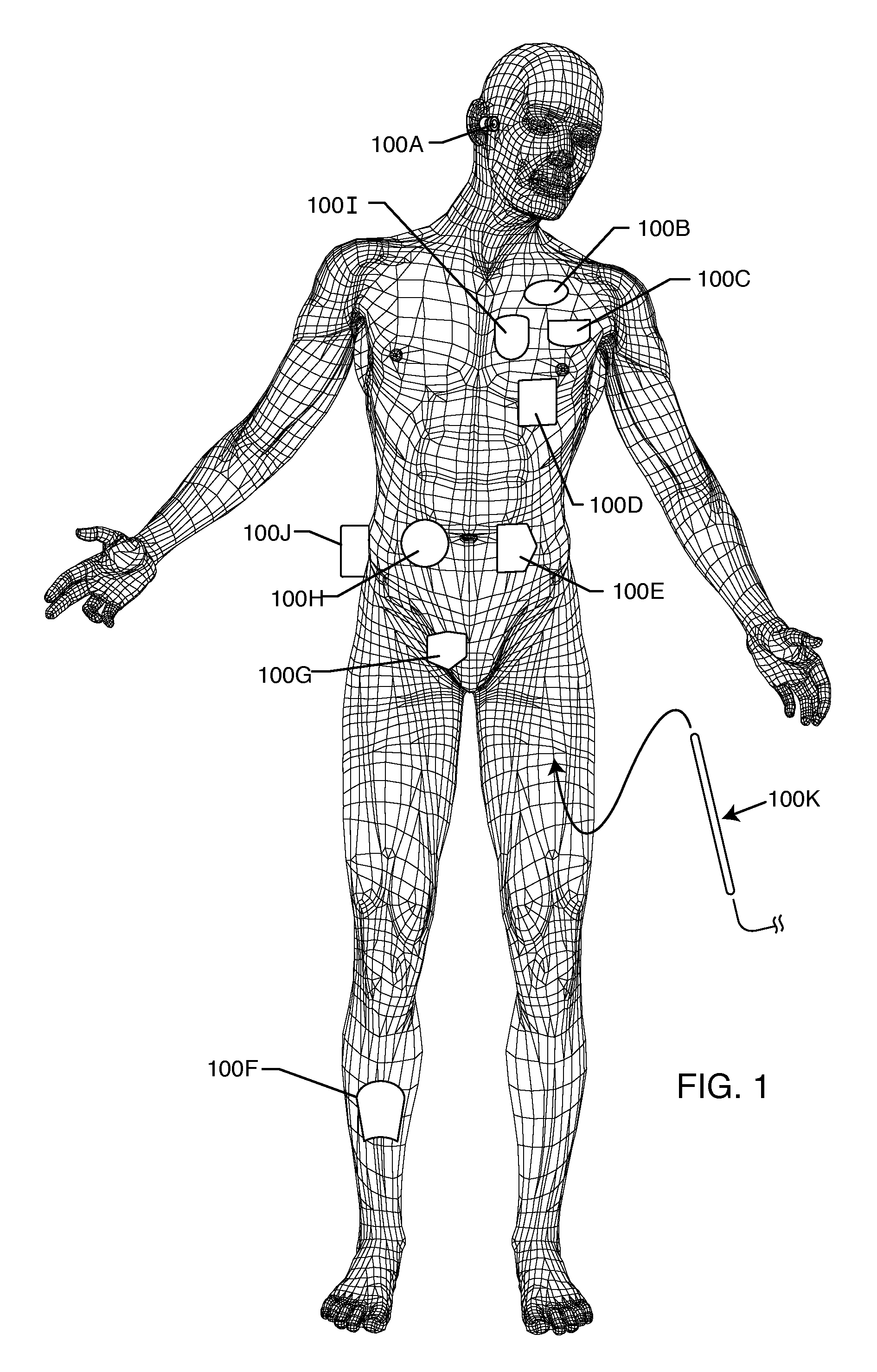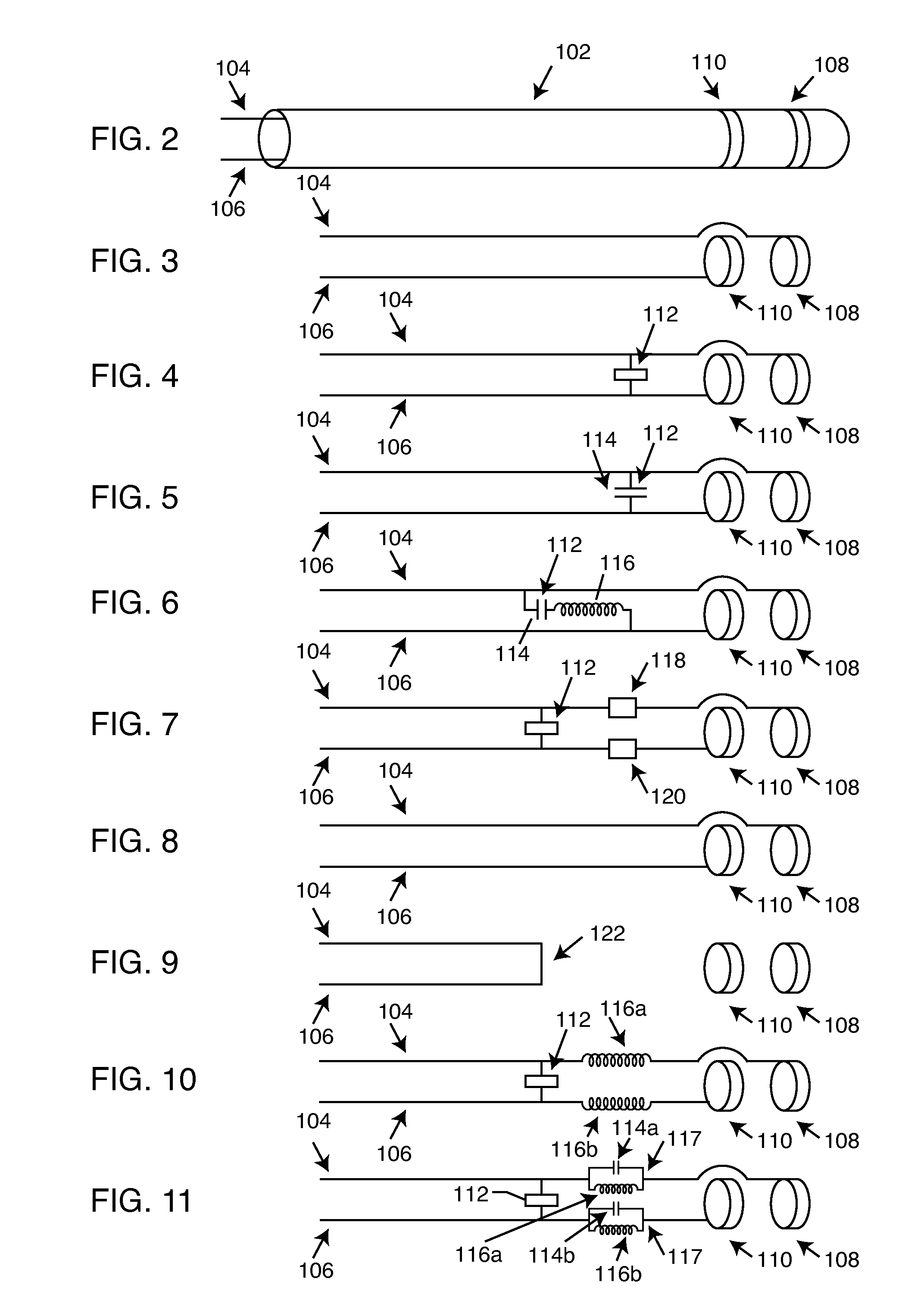Switched diverter circuits for minimizing heating of an implanted lead and/or providing EMI protection in a high power electromagnetic field environment
a technology of emi protection and diverter circuit, which is applied in the field of energy induced on implanted leads, can solve the problems of overheating of said lead or its associated electrode or overheating of the associated interface with body tissue, loss of cardiac pacemaking pulse capture, brain damage or multiple amputations
- Summary
- Abstract
- Description
- Claims
- Application Information
AI Technical Summary
Benefits of technology
Problems solved by technology
Method used
Image
Examples
Embodiment Construction
[0178]As shown in the drawings for purposes of illustration, the present invention resides in a tuned energy balanced system including a switched diverter circuit, for minimizing heating of an implanted lead and / or providing
[0179]More particularly, the present invention resides in a switched diverter circuit comprising at least one switch for diverting energy in the implanted lead or a leadwire through the diversion circuit to the energy dissipating surface. In alternate embodiments, the switch is disposed between the implanted lead or the leadwire and the diversion circuit, or it is situated such that it electrically opens the implanted lead or the leadwire when diverting energy in the implanted lead or the leadwire through the diversion circuit to the energy dissipating surface. The switch may comprise a single or a multi-pole double throw or single throw switch.
[0180]In one preferred embodiment, the invention resides in a combination of bandstop filters placed at or near the dis...
PUM
 Login to View More
Login to View More Abstract
Description
Claims
Application Information
 Login to View More
Login to View More - R&D
- Intellectual Property
- Life Sciences
- Materials
- Tech Scout
- Unparalleled Data Quality
- Higher Quality Content
- 60% Fewer Hallucinations
Browse by: Latest US Patents, China's latest patents, Technical Efficacy Thesaurus, Application Domain, Technology Topic, Popular Technical Reports.
© 2025 PatSnap. All rights reserved.Legal|Privacy policy|Modern Slavery Act Transparency Statement|Sitemap|About US| Contact US: help@patsnap.com



